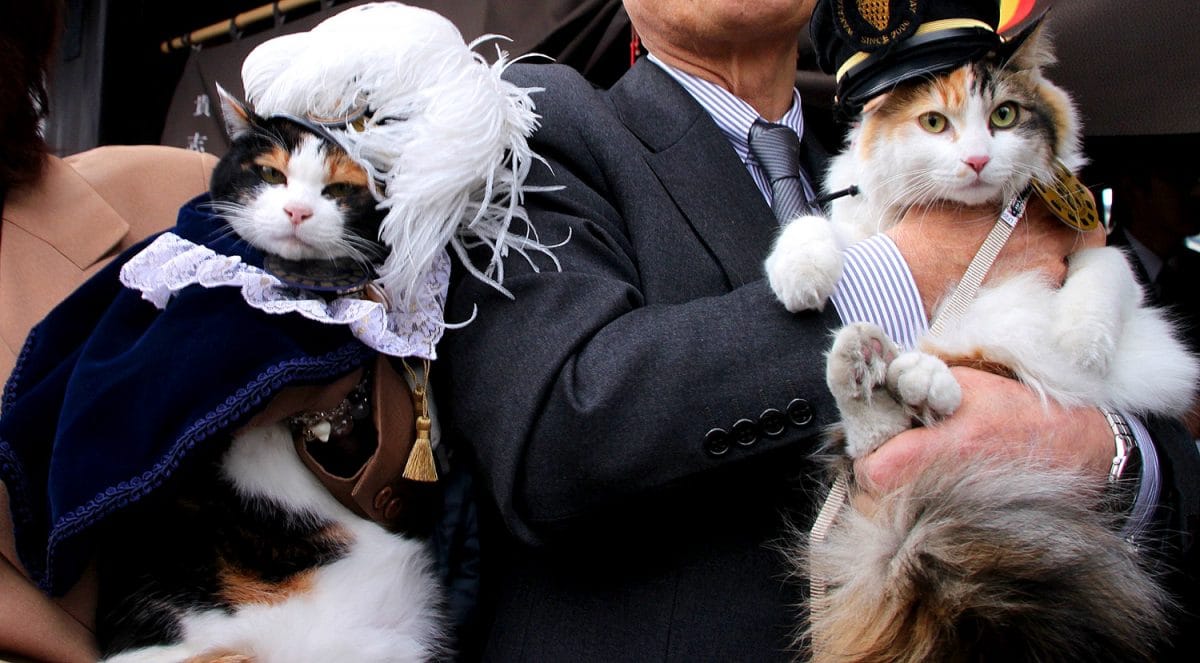The cats are finally out of the bag in the Wakayama Prefecture in Japan
Meet the furry feline friends that helped revitalise a train route that almost ceased to exist and turn it into one of the top attractions in the province.

When a small district at the fringe of a bigger town becomes more and more obscure, how do we revive it? These are the things that are occurring more and more commonly in the rural areas of Japan. Various methods were undertaken with varying degrees of success, but one remote village located just east of the mid-size city of Wakayama came up with a brilliant idea that would attract visitors from all around the world in numbers to this humble little village. So what was it that they did that was so effective?
They decided to put a stationmaster at the terminus of the Kishigawa line, and a very special one indeed. Why? Well for a start, she’s a cat.
It all started around 2004 when the informal officer in charge of the Kishi train station, the last train stop served by the fading Kishigawa line in the Wakayama prefecture, adopted a stray named Tama and made her a local star. Since then, Tama had been garnering attention and eventually helped locals convince the council to overturn the decision to close down the line.
The tourism boost generated by the introduction of this feline friend only grew bigger and not long after, Tama was adorned with gifts and honours for her contribution to the local society. Taking advantage of Tama’s fame, the Kishigawa line improved its train services as well and as of today, the electric-powered trains running along this route now has 4 different quirky designs, where one of them, the Tama Densha, is dedicated to Tama herself and contains a whopping 101 Tamas drawn on the body of the train.
Unfortunately, Tama passed away in 2015, passing the baton of her legacy to her understudy, Nitama, or “Tama the Second”, to continue carrying out ‘super’ stationmaster duties. Tama can rest assured that the station is in safe paws, for Nitama is not without experience in this kind of work, as she had already served as the stationmaster of another small station, the Idakiso station, which is 5 stops away from Kishi station on the same Kishigawa line. Unlike Tama who has short coat length and a rather dashing look, Nitama is more on the fluffy side and exudes elegance, as shown in their respective adorable cartoon depictions.

Most days, you would usually find Nitama dozing off in her spacious box, rarely bothered by the flock of tourists admiring her. You don’t need to worry about her wellbeing though as all she’s required to do is nap most of the time, like normal domesticated cats do, and every so often throughout the day, she would get a well-deserved fur brush and a tummy rub by the station officer who is also in charge of the merchandise shop. On top of that, she is only in attendance at the station 5 days a week, while her apprentice Yontama takes over her workload as stationmaster at Kishi station on the other 2 days. Yontama also took over Nitama’s previous workpost when Tama was still alive, and it’s safe to say that when the time comes, Yontama will be promoted to Super Stationmaster in Kishi station.

While there isn’t much action in the quaint town of Kishi, the presence of the calico snoozing in her comfy box and the abundance of Tama-related merchandise goods found in the nearby souvenir shop that accompanies her are enough to make cat lovers all around the globe travel all the way to this remote village to get a glimpse of the celebrity cat. The locals, on the other hand, mostly don’t mind the visitors coming in and out of the village. In fact, they’re thankful that this phenomenon that is unique to Japan, nicknamed the Nekonomics (the economics of cats), has helped them revive the dying train line that goes deep into the countryside.










